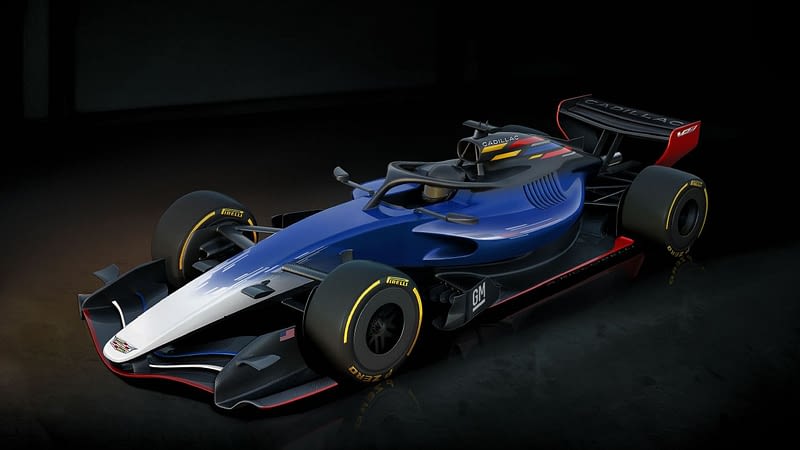Cadillac’s Bold Move: General Motors Joins Formula 1 in 2026
The Americans are coming, and they’re coming in style. General Motors (GM) is officially entering the high-octane world of Formula 1, with its Cadillac brand set to hit the grid in 2026. This groundbreaking announcement, made on Monday, marks a historic moment for American motorsport fans. By the time Cadillac becomes F1’s 11th team, it will have been a staggering 50 years since a U.S.-based team last competed in the series. Let that sink in for a moment—half a century of waiting for this moment.
But how did we get here? After all, it wasn’t too long ago that GM’s initial efforts to join F1, spearheaded by Andretti Global, were rejected. So, what changed? And what does this mean for the future of American racing? Let’s dive into the details and reactions surrounding this seismic shift in the motorsport landscape.
How GM Turned F1’s “No” Into a “Yes”
General Motors’ entry into Formula 1 represents a dramatic U-turn for the sport, which had previously been hesitant to expand the grid. The key to this reversal lies in the details of Monday’s announcement—and, more importantly, what wasn’t said. Initially, GM’s F1 ambitions were tied to Andretti Global, but the Cadillac press release made no mention of Andretti. Instead, GM has taken full control of the project, sidelining Andretti in the process.
So, what happened behind the scenes? The turning point came in September when holding company TWG Global took control of Andretti Global. Michael Andretti, whose public criticisms had ruffled feathers in the F1 paddock, was moved out of a leadership role. This allowed TWG to convince GM to take the reins entirely, transforming Cadillac from a mere technical partner into a full-fledged team. GM’s commitment to eventually building and supplying its own engines was a game-changer, addressing one of F1’s key concerns about adding an 11th team.
Earlier this year, F1 had rejected the Andretti-GM bid, citing concerns about value and competitiveness. The sport doubted that a technical partnership with GM would bring enough to the table to justify sharing its booming revenues with another team. But with Cadillac now fully committed—and backed by GM’s significant financial resources—those concerns have been alleviated. It’s a similar scenario to Audi’s entry into F1, as the German manufacturer prepares to take over the Sauber team in 2026 with a full works setup.
By the end of the decade, Cadillac aims to achieve full works status. In the short term, the team will rely on a customer engine deal with an existing manufacturer, though the identity of that partner remains under wraps. The team will operate primarily out of a factory near the Silverstone circuit in the UK, while also utilizing Toyota’s wind tunnel facility in Cologne, Germany. GM’s U.S.-based racing facilities may also play a role. Expect a flurry of high-profile hires in the coming months; the team has already brought on Pat Symonds as executive engineering consultant and former Renault executive Rob White as chief operating officer.
Cadillac vs. the World
For General Motors, Formula 1 represents the final frontier in global motorsport. The company’s racing pedigree is undeniable. GM-powered machines have won 18 Indianapolis 500s, with victories split between the now-defunct Oldsmobile brand and Chevrolet. In NASCAR, GM’s dominance is unmatched, with 1,199 Cup Series wins and 43 manufacturer’s titles. And let’s not forget the company’s success in NHRA drag racing and sports car competitions like Le Mans.
But F1 is a different beast entirely. The timeline for Cadillac’s debut is ambitious, to say the least. The team will hit the grid in 2026 with outside support but aims to become a fully independent works team by the end of the decade. This is a stark contrast to American-based Haas F1, which operates out of England and relies on Ferrari engines. Even Ford’s upcoming partnership with Red Bull in 2026 will be limited to engine supply, with no team ownership involved.
When Cadillac rolls onto the grid in 2026, it will carry the weight of sky-high expectations from a rapidly growing U.S. Formula 1 fanbase. Over the past five years, F1 has gone from niche to mainstream in America, thanks in part to Netflix’s “Drive to Survive” series and the addition of races in Miami, Austin, and Las Vegas. But with increased interest comes increased pressure. As 1963 Indy 500 winner Parnelli Jones once said, “The good news is that so many more people in the United States care about Formula 1 now. The bad news is that because of that, in their eyes, there’s no ramping-up time. They want results now.”
A Legacy of American F1 Efforts
Cadillac’s entry into F1 will inevitably draw comparisons to past American efforts in the sport. In the 1970s, teams like Vel’s Parnelli Jones Racing, Shadow Racing Cars, and Team Penske all made their mark, but none could sustain long-term success. The ultimate benchmark remains Dan Gurney’s Anglo American Racers, whose Eagle T1G won the 1967 Belgian Grand Prix and is still celebrated as one of the most beautiful F1 cars ever built.
Mario Andretti, the only American to win an F1 world championship, summed it up best: “Any racer worth his salt wants to be challenged. There is no greater challenge than Formula 1 racing. Except perhaps getting there in the first place.”
With Cadillac’s arrival, the stage is set for a new chapter in American motorsport history. The road to 2026 will be anything but easy, but if there’s one thing we know about General Motors, it’s that they don’t back down from a challenge.
Originally Written by: Nate Saunders





















